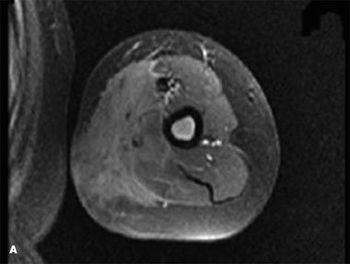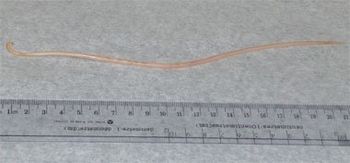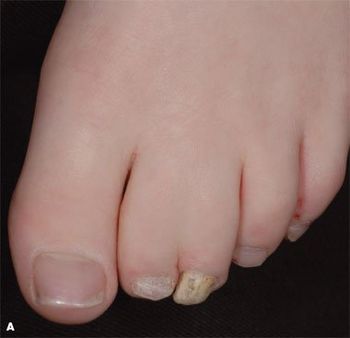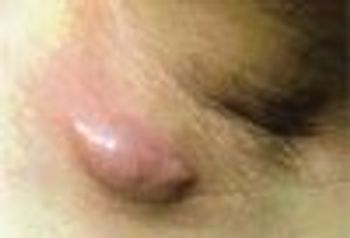
A 3-month-old African American boy was referred for evaluation of poor weight gain and vomiting. The infant had been evaluated by his primary care physician 15 times within the past 6 weeks; he had no change in symptoms despite various treatments.

A 3-month-old African American boy was referred for evaluation of poor weight gain and vomiting. The infant had been evaluated by his primary care physician 15 times within the past 6 weeks; he had no change in symptoms despite various treatments.

Selective IgA deficiency (SIGAD) is the most common immunodeficiency disorder; it affects about 1 in 200 to 900 persons. Most affected children are asymptomatic.

A 5-ft 1-in, 183-lb 14-year-old girl was concerned about the areas of thickened hyperpigmentation on her posterior neck and in her cleavage.

For 3 months, a 9-year-old boy had swelling of the left upper arm. An MRI scan obtained at another facility 1 week after onset showed extensive edema of the soft tissue at the midhumeral level. Laboratory results, including complete blood cell (CBC) count and Lyme titer, were normal.

A 2-month-old boy is brought to the emergency department (ED) because of “noisy breathing” that has been present since birth. The parents report that they occasionally see the child’s ribs during inspiration when he is lying down.

A healthy 4-year-old girl passed a threadlike object in her stool at a day-care center. She had no diarrhea, vomiting, or abdominal pain. Stool had no blood or melena. Child’s appetite normal.

The authors’ comments on the use of melatonin to treat insomnia in children were very helpful as well.

Two girls present with toenail yellowing and thickening. What clinical clues will help you determine which toenails are mycotic?

To determine which children who had sustained head injuries would not benefit from CT scans, Kuppermann and colleagues3 conducted a prospective cohort study of more than 42,000 children from 25 North American emergency departments (EDs).

An overweight 13-year-old girl, with a body mass index of 29, presented with a lump in her axilla for the fourth time in the past several months. This time, the lump recurred in the left axilla; it had developed in the right axilla on 2 other occasions.

A 2-year-old boy presented with paraphimosis.This condition occurs when retraction of the foreskin behind the corona of the penis forms a tight ring that impairs blood and lymph flow from the glans and prepuce. Untreated, paraphimosis can lead to pain, urethral obstruction with urine retention and hydronephrosis, or tissue ischemia (with ulceration, penile gangrene, and auto-amputation of the penis).